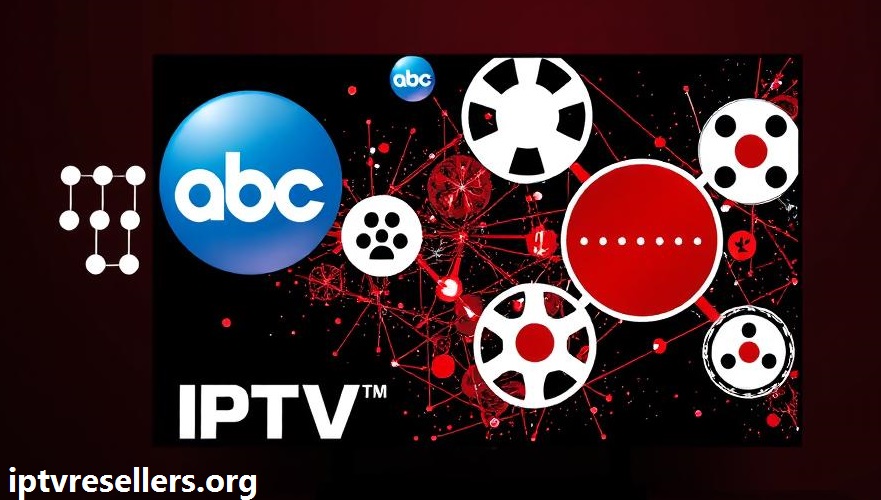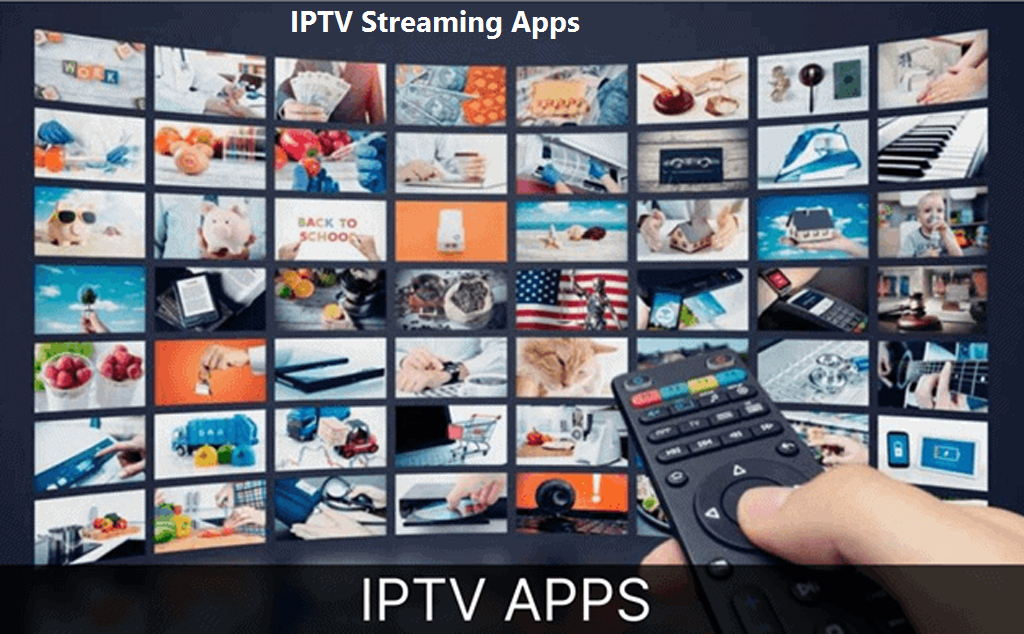
What is IPTV? The Comprehensive Guide to Internet Protocol Television
Internet Protocol Television (IPTV) represents a significant shift in how television content is delivered and consumed. Unlike traditional broadcast methods such as terrestrial, satellite, or cable TV, IPTV uses Internet Protocol (IP) networks to stream live television channels and on-demand content directly to viewers’ devices. This technology allows users to access multimedia services—including video, audio, text, and graphics—over managed, IP-based networks that ensure a specific Quality of Service (QoS) and experience. The term “IPTV” itself highlights its foundation in internet protocols, the same set of rules that govern data transmission across the internet.
The rise of IPTV is closely tied to the global expansion of broadband internet and the increasing consumer demand for flexibility and control over their viewing experiences. As a result, IPTV has become a popular alternative to conventional TV services, offering a more personalized and interactive approach to media consumption. It is typically provided by telecommunications operators as part of a bundled package that may include internet access and voice-over-IP (VoIP) services, creating a comprehensive digital solution for modern households 14.
IPTV should not be confused with over-the-top (OTT) services like Netflix or YouTube, which also deliver video content via the internet but operate on public networks without the same level of managed quality. Instead, IPTV typically operates within a closed, managed network controlled by the service provider, which helps maintain high standards of reliability and performance. This distinction is crucial for understanding the unique value proposition of IPTV in the evolving landscape of digital media.
How Does IPTV Work?
At its core, IPTV functions by converting traditional television signals into digital data packets that can be transmitted over IP networks. This process involves several key steps and components:
-
Content Acquisition and Encoding: IPTV providers gather content from various sources, such as live TV broadcasts, video-on-demand (VOD) libraries, and time-shifted media. This content is then encoded and compressed into digital formats (e.g., MPEG-2, MPEG-4, or H.264) to reduce bandwidth requirements while maintaining high quality.
-
Middleware and Servers: The encoded content is processed by middleware—software that acts as a bridge between the content sources and the end-user interface. This middleware manages user authentication, content navigation, and interactive features. The content is stored on servers, which can be arranged in a centralized or distributed architecture depending on the scale and efficiency needs of the provider.
-
Content Delivery: When a user selects a program, the request is sent to the IPTV provider’s servers. Unlike traditional TV, which broadcasts all channels simultaneously (multicast), IPTV typically uses unicast transmission, sending only the requested program to the user’s device. This efficient delivery method reduces bandwidth usage and allows for a more personalized viewing experience.
-
End-User Devices: The IPTV stream is received by a set-top box (STB) or a compatible device (e.g., smart TV, smartphone, or tablet), which decodes the data packets and converts them into a format displayable on the screen. Users interact with the service through an intuitive interface, often including electronic program guides (EPGs) and interactive features.
This streamlined process enables IPTV to offer a seamless and high-quality viewing experience, leveraging the flexibility and scalability of IP networks.
The Evolution and History of IPTV
The development of IPTV is rooted in advancements in digital compression and broadband internet technologies. In the early 1990s, the combination of motion-compensated DCT video compression (used in standards like H.26x and MPEG) and asymmetric digital subscriber line (ADSL) data transmission made it feasible to deliver video content over telephone lines, which previously had limited bandwidth 1. This breakthrough paved the way for the first video-on-demand (VOD) services.
The term “IPTV” was coined in 1995 with the founding of Precept Software by Judith Estrin and Bill Carrico. Their product, IP/TV, was a pioneering application that transmitted audio and video traffic over IP networks using unicast and multicast protocols. Precept was acquired by Cisco Systems in 1998, marking an early milestone in the commercialization of IPTV technology.
Key historical developments include:
-
1998: US West (later Qwest) launched TeleChoice in Phoenix, Arizona, becoming the first U.S. company to provide digital television over telephone lines using VDSL technology.
-
1999: Kingston Communications in the UK introduced Kingston Interactive Television (KIT), an IPTV service over DSL, which included VOD capabilities.
-
2000s: IPTV gained traction globally, with providers like Bell Aliant in Canada and SureWest Communications in the U.S. offering high-definition IPTV services.
-
2010s-Present: IPTV subscriptions grew exponentially, surpassing one billion users worldwide. Europe and Asia emerged as leading markets, while services like PTCL Smart TV in Pakistan and Manbang in North Korea demonstrated the global reach of IPTV.
Today, IPTV continues to evolve, driven by innovations in fiber-optic networks, compression algorithms, and interactive features, solidifying its role as a cornerstone of modern media consumption.
Different Types of IPTV Services
IPTV services can be categorized into several distinct formats, each catering to different viewer preferences and use cases:
-
Live Television: This format allows users to watch TV broadcasts in real-time over the internet. It mimics traditional TV but with added interactivity, such as the ability to pause or rewind live programs. Examples include services like Sling TV and YouTube TV.
-
Video on Demand (VOD): VOD services offer a library of pre-recorded content—such as movies, TV shows, and documentaries—that users can access at any time. This model is popularized by platforms like Netflix and Hulu, but many IPTV providers also include VOD as part of their offerings.
-
Time-Shifted TV (Catch-Up TV): This type allows viewers to watch previously aired programs at their convenience. Unlike VOD, time-shifted content is typically available for a limited period after the original broadcast. BBC iPlayer and Hulu are prominent examples.
-
Near Video on Demand (NVOD): NVOD schedules multiple start times for the same program, enabling viewers to join a broadcast at intervals (e.g., every 30 minutes). This approach is often used for premium events like movie releases and is offered by providers like DirecTV.
-
TV on Demand (TVoD): Similar to VOD, TVoD focuses on recording and storing specific TV channels for on-demand access, allowing users to watch their favorite shows without being tied to a broadcast schedule.
These formats can be offered through both verified (legal) and unverified (often unlicensed) IPTV services. Verified services are available in official app stores and include providers like Philo and DirecTV Stream, while unverified services may require side-loading and carry legal and security risks.
Key Components of IPTV Architecture
A robust IPTV system relies on several interconnected components to deliver content efficiently:
-
Content Sources: These include live TV feeds, VOD libraries, and other media assets that form the foundation of the service. Content is typically acquired from broadcasters, studios, and other rights holders.
-
Encoding and Compression Systems: Raw content is encoded into digital formats and compressed using codecs like MPEG-4 or H.264 to optimize bandwidth usage. Advanced compression techniques, such as High Efficiency Video Coding (HEVC), are increasingly used to support 4K and HDR streaming.
-
Middleware: This software platform manages user interfaces, electronic program guides (EPGs), billing systems, and other interactive features. Middleware acts as the “brain” of the IPTV service, ensuring a seamless user experience.
-
Delivery Network: IPTV content is distributed through a managed network—often a private, dedicated infrastructure—that ensures reliable delivery and Quality of Service (QoS). This network may include content delivery networks (CDNs) to reduce latency and improve scalability.
-
End-User Devices: Customers access IPTV services via set-top boxes, smart TVs, computers, or mobile devices. These devices decode the IP streams and display the content, often with support for interactive features like recording and playback.
Table: Comparison of IPTV Architecture Models
| Architecture Type | Description | Advantages | Disadvantages |
|---|---|---|---|
| Centralized | All content is stored and managed from a single server location. | Simple to manage; cost-effective for small deployments. | Limited scalability; potential bandwidth bottlenecks. |
| Distributed | Content is distributed across multiple servers, often geographically dispersed. | Scalable; efficient bandwidth usage; improved reliability. | More complex to manage; higher initial costs. |
Benefits of IPTV
IPTV offers numerous advantages over traditional television delivery methods:
-
Flexibility and Convenience: Viewers can watch content on-demand and on multiple devices, including smartphones, tablets, and laptops, enabling entertainment anywhere with an internet connection.
-
Enhanced Interactivity: Features like pause, rewind, and fast-forward for live TV, along with interactive advertising and in-program messaging, create a more engaging user experience.
-
High-Quality Streaming: IPTV supports high-definition (HD), 4K, and even HDR content, providing superior picture and sound quality compared to many traditional TV services.
-
Cost-Effectiveness: By leveraging IP networks, providers can offer competitive pricing and customizable packages, allowing users to pay only for the channels they want.
-
Vast Content Selection: IPTV services often include thousands of live channels and on-demand titles, including international and niche programming that may not be available through traditional cable or satellite.
-
Integration with Other Services: IPTV can be bundled with internet access, VoIP, and other IP-based services, creating a unified and convenient solution for consumers.
These benefits have contributed to the rapid growth of IPTV, with global subscriptions increasing at an annual rate of 30-35%.
Challenges and Limitations
Despite its advantages, IPTV faces several challenges:
-
Internet Dependency: IPTV requires a stable, high-speed internet connection (typically at least 15 Mbps). Network congestion or outages can lead to buffering, interruptions, and reduced video quality.
-
Legal and Copyright Issues: The IPTV landscape includes unverified services that may distribute pirated content without proper licensing. This not only violates copyright laws but also exposes users to legal risks and security threats.
-
Technical Complexity: Implementing and maintaining an IPTV system requires significant investment in infrastructure and technical expertise. Providers must manage servers, networks, and middleware to ensure a smooth user experience.
-
Limited Local Content: Some IPTV services focus on international channels, which may result in less local programming (e.g., regional news) compared to traditional TV.
-
Synchronization Issues: Variations in network speed can cause audio-video synchronization problems, degrading the viewing experience.
To mitigate these challenges, users should choose reputable providers and ensure they have a reliable internet connection. Additionally, using a virtual private network (VPN) can enhance privacy and security when accessing unverified services.
IPTV vs. OTT vs. Traditional TV
Understanding the differences between IPTV, OTT, and traditional TV is essential for consumers and industry professionals alike:
-
IPTV: Delivered over managed, private networks by telecommunications or cable providers. Offers high QoS, reliability, and integration with other services. Examples include Verizon FIOS and AT&T TV 510.
-
OTT (Over-the-Top): Distributed via public internet networks and accessed directly through apps or websites. No dedicated infrastructure is required, but QoS may vary. Examples include Netflix and YouTube.
-
Traditional TV: Includes terrestrial, satellite, and cable broadcasting. Content is transmitted via radio waves or physical cables and received through antennas, dishes, or set-top boxes. Examples include DirecTV (satellite) and Comcast (cable).
Key Differences:
-
Network Control: IPTV uses managed networks; OTT uses public internet.
-
Quality of Service: IPTV typically offers better QoS and fewer buffering issues than OTT.
-
Content Delivery: Traditional TV broadcasts all channels simultaneously; IPTV and OTT use unicast to deliver only requested content.
-
Interactivity: IPTV and OTT support interactive features; traditional TV is generally passive.
Legal and Safety Considerations
The legality of IPTV services varies widely. Verified providers operate with proper licensing and content agreements, ensuring compliance with copyright laws. These include well-known services like Sling TV and Hulu + Live TV, which are available in official app stores.
In contrast, unverified services often lack licensing and may offer access to pirated content. Using such services can pose legal risks for both providers and users, as well as security threats like malware and data theft 36. To stay safe:
-
Choose providers with a positive reputation and transparent licensing.
-
Avoid services that offer premium content at unrealistically low prices.
-
Use a VPN to protect your privacy and encrypt your internet connection.
-
Be cautious when providing payment information; consider using anonymous payment methods.
Regulatory bodies worldwide are increasingly cracking down on illegal IPTV operations, emphasizing the importance of selecting legitimate services.
How to Choose an IPTV Service
Selecting the right IPTV service depends on several factors:
-
Content Library: Look for a service that offers the channels and VOD content you desire, including local, international, and specialty programming.
-
Device Compatibility: Ensure the service is compatible with your devices, such as smart TVs, streaming devices, or mobile platforms.
-
Price and Plans: Compare subscription fees, including any hidden costs for premium channels or additional connections. Many services offer free trials to test performance.
-
Streaming Quality: Opt for providers that support HD or 4K streaming with minimal buffering. Check recommended internet speed requirements.
-
Customer Support: Choose services with reliable customer support, including live chat, email, or phone assistance.
-
Legal Compliance: Prefer verified, licensed services to avoid legal issues and ensure ethical content consumption.
Top Verified IPTV Services in 2025 8:
-
Sling TV: Offers affordable plans with 45+ channels.
-
YouTube TV: Provides 100+ channels and unlimited DVR storage.
-
Philo: Focuses on entertainment and lifestyle channels at $28/month.
-
DirecTV Stream: Includes 125+ channels and 40,000+ on-demand titles.
-
Hulu + Live TV: Combines live TV with Hulu’s extensive VOD library.
The Future of IPTV
The future of IPTV is shaped by emerging technologies and evolving consumer preferences:
-
5G Integration: The rollout of 5G networks will enhance mobile IPTV experiences, offering higher speeds and lower latency for streaming on the go.
-
Artificial Intelligence (AI): AI-driven recommendations, personalized content curation, and improved voice controls will make IPTV services more intuitive and user-friendly.
-
Ultra-High Definition (UHD): As bandwidth capabilities expand, 8K streaming and immersive audio formats (e.g., Dolby Atmos) will become more prevalent.
-
Interactive and Social Features: Future IPTV platforms may incorporate more social viewing experiences, such as shared watch parties and real-time interaction with content.
-
Convergence with OTT: The lines between IPTV and OTT will continue to blur, with providers offering hybrid models that combine the reliability of managed networks with the flexibility of internet-based streaming.
Despite competition from OTT services, IPTV is poised for continued growth, particularly in regions with expanding broadband infrastructure.
Frequently Asked Questions
What is IPTV?
IPTV (Internet Protocol Television) is a service that delivers television content over Internet Protocol (IP) networks, such as the internet, instead of through traditional terrestrial, satellite, or cable formats. It includes live TV, video-on-demand (VOD), and time-shifted programming.
How is IPTV different from streaming services like Netflix?
IPTV often operates on a managed network controlled by a service provider, ensuring higher quality and reliability. In contrast, OTT streaming services like Netflix use the public internet without guaranteed QoS. Additionally, IPTV typically offers live TV channels, while OTT focuses on on-demand content.
Is IPTV legal?
Yes, IPTV is legal when provided by licensed and verified services that have proper content agreements. However, unverified services that offer pirated content are illegal and may pose security risks.
What internet speed do I need for IPTV?
A minimum speed of 15 Mbps is recommended for standard HD streaming. For 4K content, speeds of 25 Mbps or higher may be required to avoid buffering.
Can I use IPTV without a set-top box?
Yes, many IPTV services are accessible via apps on smart TVs, smartphones, tablets, and computers. However, some providers may require a set-top box for decoding and decrypting streams.
What are the costs associated with IPTV?
IPTV subscription prices vary widely. Verified services like Sling TV start at $45.99/month, while unverified services may be cheaper but carry legal risks. Additional costs may include equipment rentals or premium channel add-ons 8.
How can I ensure a secure IPTV experience?
Use a VPN to protect your privacy, choose reputable providers, avoid sharing personal information, and use anonymous payment methods when possible.
Conclusion
IPTV represents a transformative evolution in television technology, offering unparalleled flexibility, interactivity, and quality for modern viewers. By leveraging IP networks, it provides a personalized and immersive viewing experience that traditional broadcast methods cannot match. However, users must navigate challenges such as internet dependency and legal considerations to fully enjoy its benefits. As technology continues to advance, IPTV is set to play an even more significant role in the future of entertainment, driven by innovations in AI, 5G, and ultra-high-definition content. Whether you are a consumer or a industry professional, understanding IPTV is essential for staying ahead in the dynamic world of digital media.





